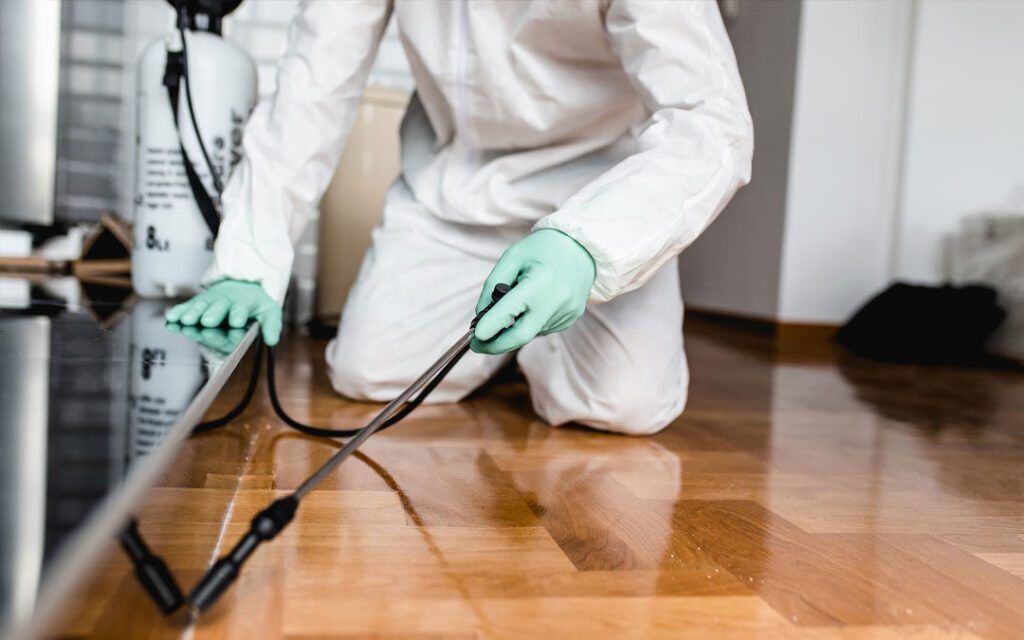Pest Removal Specialists Chicago: Experienced Experts for All Sorts Of Pests
A Comprehensive Overview to the Various Types of Insect Control Techniques
With the myriad of bug control methods readily available, it can be frustrating to locate the most effective service for a particular insect issue. In this extensive overview, we will explore these different types of pest control approaches, supplying insights right into their applications and advantages. By the end, you will certainly have a more clear understanding of which technique might be the ideal fit for your insect control needs.
Chemical Bug Control Techniques

One common kind of chemical insect control is pesticides. Pesticides target certain bugs, such as mosquitoes, termites, or ants, and can be made use of both inside your home and outdoors.
An additional kind of chemical bug control is rodenticides. These are chemical substances developed to regulate populaces of rodents, such as rats and mice.
Weed killers, also called herbicides, are one more kind of chemical pest control technique. Herbicides are designed to selectively eliminate undesirable plants, recognized as weeds, without triggering damage to preferable plants. They are typically used in farming, landscaping, and gardening to regulate the development of unwanted vegetation.
While chemical insect control techniques can be very reliable in eliminating parasites, it is essential to utilize them judiciously and comply with security guidelines. Overuse or abuse of chemical pesticides can have negative influences on human health and the atmosphere. It is important to utilize these techniques properly and consider alternative parasite control strategies whenever possible.
Biological Insect Control Methods
Organic bug control approaches include the use of living microorganisms or natural substances to take care of and control pest populations. Unlike chemical methods, which usually count on artificial pesticides, biological control methods use the all-natural opponents of parasites to regulate their populations. This approach is thought about more eco-friendly and sustainable, as it decreases the use of unsafe chemicals and minimizes the threat of chemical resistance.
One extensively made use of biological parasite control technique is the intro of natural killers or bloodsuckers. Ladybugs are introduced to control aphids, while specific wasp varieties are released to target caterpillars. These killers and bloodsuckers prey on bugs, decreasing their numbers and stopping infestations.
One more biological control technique is using pathogens. Specific germs, viruses, and fungi can be used to contaminate and eliminate certain pests. For instance, the microorganism Bacillus thuringiensis is typically utilized to regulate caterpillars, as it generates toxins that are deadly to these parasites.
Organic control techniques can likewise entail making use of scents or all-natural substances that disrupt the mating patterns of insects. By conflicting with their recreation, these techniques assist to decrease pest populaces gradually.
While biological bug control methods are generally effective, they may need longer durations to attain desired outcomes compared use this link to chemical techniques. Additionally, careful factor to consider needs to be provided to the choice and release of all-natural adversaries to stop unintentional injury to valuable microorganisms or ecosystems.
Physical Pest Control Approaches
To properly take care of and manage pest populaces, alternative parasite control methods recognized as physical parasite control techniques are employed. Another physical pest control technique is the installation of fencings or wall pop over here surfaces to maintain larger pests, such as deer or rabbits, out of gardens or agricultural fields. Physical insect control methods are an environmentally pleasant choice to chemical pesticides, as they do not rely on the use of unsafe chemicals.
All-natural Parasite Control Approaches
All-natural insect control techniques provide a lasting and environmentally friendly strategy to managing and eliminating insects. These techniques prioritize making use of all-natural substances and biological agents, decreasing the requirement for chemical pesticides that can hurt the atmosphere and human health. Among one of the most common natural insect control techniques is organic control. This entails introducing all-natural predators or parasites to exploit or parasitize the pests. For example, ladybugs are commonly introduced to yards to control aphid populaces. An additional all-natural approach is the use of repellents originated from plants. Certain plants, such as marigolds, lavender, and peppermint, emit scents that fend off pests like mosquitoes, flies, and ants. In addition, cultural control methods can be utilized to protect against and handle insect infestations. This consists of appropriate sanitation, normal upkeep, and promoting biodiversity in the yard. For instance, rotating plants, removing garden debris, and encouraging natural killers can assist avoid the buildup of insects. By taking on these natural pest control approaches, people and communities can effectively manage parasites while minimizing the adverse influence on the atmosphere and human health and wellness.
Integrated Insect Administration (IPM)
Integrated Pest Administration (IPM) is an extensive and organized technique to pest control that integrates various approaches and methods to effectively manage insects while reducing making use of chemical pesticides. IPM intends to preserve bug populations listed below the economic injury degree by using a mix of social, biological, and chemical control techniques.
Social control approaches include changing the setting to make it less favorable for pests. This can consist of discover this techniques such as plant rotation, appropriate sanitation, and making use of resistant plant ranges. By developing undesirable conditions for pests, social control techniques can substantially lower pest populaces.

Chemical control approaches are used as a last resort in IPM. They involve the targeted and wise use pesticides to handle insect populations. Unlike traditional insect control techniques, IPM intends to lessen making use of chemical pesticides by utilizing alternate approaches.
Integrated Pest Monitoring (IPM) is a positive strategy that focuses on long-term parasite management rather than depending solely on reactive steps. By combining several control methods, IPM provides a much more sustainable and eco-friendly approach to pest control.
Final Thought
It reviewed chemical, biological, physical, and all-natural parasite control methods, as well as the incorporated insect management method. By comprehending these numerous methods, individuals can make enlightened choices on which insect control method is most ideal for their specific needs and preferences.